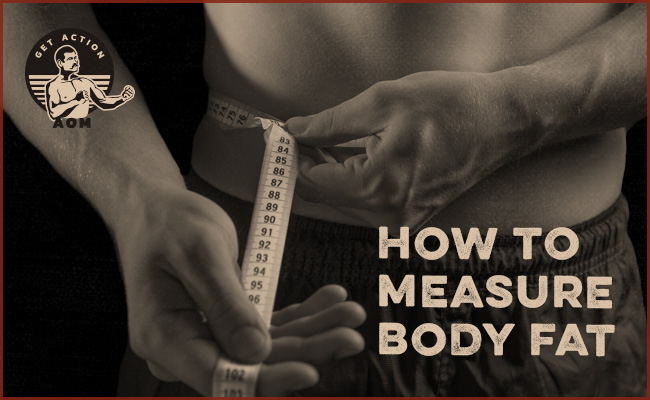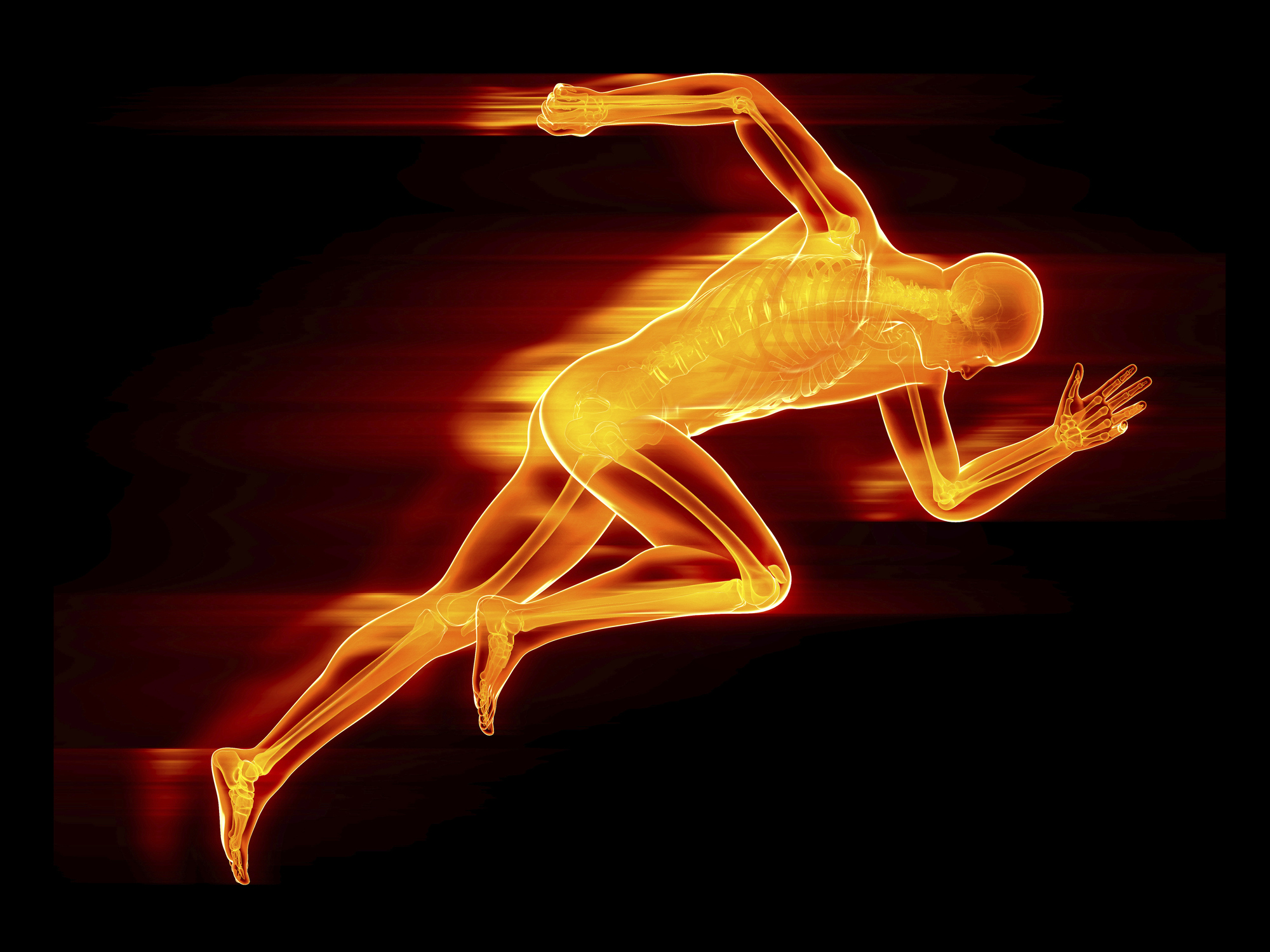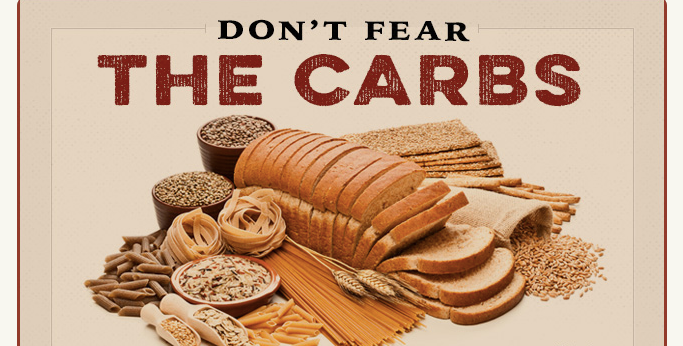
If you’re like a lot of dudes, your goal for the coming year is “to lose weight.”
Really though, you don’t want to lose weight, you want to lose fat. And this distinction matters because it relates to how you’re going to measure progress towards your goal.
The most common way to measure fat loss is with a garden variety bathroom scale. But the number on a scale represents your overall body weight, which includes not only your fat, but also your muscles, bones, organs, and lots and lots of water.
Because a scale doesn’t only measure fat gain/loss, it doesn’t always give you an accurate picture of your progress. You may be feeling and looking trimmer, but find that you’ve gained a couple pounds when you hop on the scale. So have you gained fat, or does this added weight represent a gain in muscle or water?
After a weekend of eating salty restaurant food, you can put on a few pounds of impermanent water weight that you’ll shed in a matter of days.
If you’ve been putting on muscle, which is heavier than fat, it’s possible to look like you’ve lost weight while actually gaining it.
Given these fluctuations and inaccuracies, it’s useful to move beyond the standard scale and isolate and track the measurement of your body fat percentage alone. Below we’ll give you the rundown on the different methods that can be used to do so.
What Should My Body Fat Percentage Be?
Before we get into how to measure your body fat percentage, let’s talk about the number you should be aiming for. You’ll find different charts out there giving you breakdowns of healthy-to-unhealthy body fat percentages. Here’s the body fat percentage chart from the American Council on Exercise:
| Description | Body fat % (women) | Body fat % (men) |
| Athletes | 14%–20% | 6%–13% |
| Fitness | 21%–24% | 14%–17% |
| Acceptable | 25%–31% | 18%–24% |
| Obesity | >32% | >25% |
These are, of course, just general recommendations. The big takeaway is that if you’re a dude and your body fat percentage is greater than 24%, you should probably work on losing some body fat. For insight on how to lose weight, I’d recommend the following AoM articles and podcasts:
- The Groundhog Day Diet: Why I Eat the Same Thing Every Day
- How to Eat What You Want and Still Lose Weight
- Everything You Need to Know About Diet and Fat Loss
- How to Lose Weight, and Keep It Off Forever
- Diet and Nutrition Advice From the Doctor of Gains
If you’re not above 24%, I’d say it’s up to you and your personal goals/desires/commitment-level as to where you’d like your body fat to be. Take it from someone who attempted to reduce his body fat to the 6%-13% range: it’s hard. You’ll be hungry. You’ll be cranky. You’ll be distracted at work. Your performance in the gym will suffer (contrary to popular belief, you can’t get both ripped and strong at the same time). I aborted that mission about a month into it. I can’t imagine what it must be like to be a bodybuilder who aims to get down to just “essential body fat” which is like 3%-5%. There’s a reason they only go that low for competitions and don’t look like that the rest of the year. It’s not healthy or sustainable.
Since that experiment in trying to look shredded, I’ve decided to keep my body fat percentage in the 15-17% range. Sure, I don’t look like Brad Pitt in Fight Club, but I feel good and am happy with how I look. It works for me. Peg a goal that works for you.
6 Ways to Measure Body Fat
There are a bunch of different ways to measure body fat. Each method has varying degrees of accuracy and costs — generally, the more expensive your body fat measurement tool, the more accurate the measurement. Keep in mind though, that with every method, even the most expensive, there’s always a margin of error.
Below we go through the most common body fat measuring methods, ordered from most accessible and least costly to least accessible and most costly.
Tape Measure Method
The tape measure method is the cheapest and most accessible method to measure your body fat. All you need is a measuring tape; companies make ones specifically for measuring the body, but any soft measuring tape will work.
Despite its simplicity, research says that, when done correctly, the error rate for the tape measure method can be as low as 2.5–4.5% body fat, which is nearly as low as the most expensive, high-tech methods on this list. Accuracy depends mainly on the accuracy of your measurements.
There are two ways to get a body fat percentage based on tape measure measurements: 1) the US Navy Body Fat Formula, or 2) the YMCA Body Fat Formula.
For men, the US Navy Body Fat Formula requires two measurements (all measurements should be done in inches and pounds):
Neck: The neck tape measurement measures the neck’s circumference immediately above the Adam’s apple.
Waist: The waist tape measurement measures the circumference of the narrowest waist level, located midway between the lowest rib and the top of the hip bone.
After you get those measurements, insert them into this formula:
Body Fat Percentage (%) = 86.010 x log10 (abdomen – neck) – 70.041 x log10 (height) + 36.76
Or, if you don’t want to bust out your slide ruler to calculate your body fat, just insert your measurements into this online US Navy Body Fat Formula Calculator.
The YMCA Body Fat Formula just requires you to measure your waist circumference.
For men, the YMCA Formula looks like this:
Men’s Body Fat Percent = – 98.42 + 4.15a – 0.082b / b
Where a = waist measurement in inches and b = your weight in pounds.
Or you can just input your measurements into an online YMCA Body Fat Formula Calculator.
Body Fat Calipers
The second most affordable and accessible way to measure body fat percentage is using a body fat caliper. With this little tool, you pinch and grab as big of a skinfold as you can and pull it away from your body. You then use the calipers to measure the thickness of that skinfold. By taking skinfold measurements in different parts of your body and putting them into a formula, you can get a rough idea of your total body fat percentage. You can buy a body fat caliper on Amazon for $5.
The downside of body fat calipers is that using them is kind of hard to do; proper execution feels a little squiggy. In my experience, I’m always wondering, “Did I get all the fat? Did I pinch far enough? Did I pinch it out too far?” Also, depending on the formula you use, you’ll need someone else to take the measurements because there are areas where you can’t reach and do the measurement yourself. If you don’t want to ask your wife to pinch and measure your back fat, this might not be the method for you.
There are two formulas/methodologies you can use to measure your body fat with calipers: the three site test and the seven site test.
I personally have used the three site test because it’s easy to self-administer; you’re just making measurements of your chest, abdomen, and thigh. The seven site test will require a partner. Whichever way you go, the caliper you buy should give you detailed instructions on where and how to use it, as well as a formula/chart for what your measurements mean.
When used correctly, body fat calipers have an error range of 3.5%-5%.
Body Fat Scales
For years now, scales that not only measure your overall weight, but also your body’s percentage of fat (and water and muscle) have been available on the consumer market. These scales make this measurement by passing an electrical current through your body (you don’t feel anything). Since body fat is resistant to electricity, the scale can measure your body’s percentage of it by noting where the current meets resistance.
Scales that measure body fat vary in cost, starting from around $20 and going on up to close to $100. There really doesn’t seem to be a huge difference in the accuracy or features along this range, so an affordable yet well-reviewed model like this one is a fine pick.
Body fat scales are great because they’re incredibly easy to use. You just step on the scale and wait a few seconds as you get zapped with electricity, and the scale spits out your body fat percentage. The fact that the scale also measures your water percentage helps in discerning whether a bit of overall weight gain means you’ve gotten fatter or are just bloated that day.
Accuracy can vary from a 3.8%-5% error in body fat. Accuracy can be thrown off by the quality of your scale or the amount of water you’re carrying (while the scale will isolate fat and water percentage measurements, the latter can still mess a bit with the former).
Despite the accuracy issues, the body fat scale is my go-to method for tracking my body fat, thanks to its ease of use. I know I’m not going to be motivated to measure myself with tape or calipers on the regular, while using a scale is stupid simple.
3D Body Scanners
Now we’re starting to get into the more expensive and less accessible methods to measure body fat. In recent years, 3D body scanners that can calculate body fat have been made available to consumers. These devices use infrared sensors that rotate around your body to create a digital map of it. An algorithm is then applied to these measurements to calculate body fat percentage and other body tissue compositions.
3D scanners have an error rate of 4% body fat.
3D body scanners are easy to use and have a high “cool” factor. The downside is that they’re not very accessible. It used to be you’d have to go to somebody’s imaging business to get your body scanned in 3D. These days, a company called Naked has made 3D body scanners available for home use, but buying one will set you back $1,400. Another company called ShapeScale is taking preorders on a 3D body scanner that costs $500.
If you’re a fitness tech geek and have money to burn, a home 3D scanner might be for you.
The Bod Pod
The Bod Pod is an egg-looking pod thing that you sit in. Air pressure sensors measure the volume of air displaced by your body, and further calculations can then determine your body fat percentage. With an error rate that hovers around just 2-4%, accuracy is pretty dang good.
The average guy doesn’t need that kind of exactitude, and the average guy probably won’t be able/willing to avail themselves to a Bod Pod anyway. These contraptions aren’t very accessible, and usually only available at universities and research centers. You can find the nearest Bod Pod to you with this tool. The cost is about $75 a session.
Dual-Energy X-Ray Absorptiometry (DEXA Scan)
In recent years, I’ve been reading about biohacker-types using DEXA scans to measure their body composition. DEXA is short for dual-energy x-ray absorptiometry, and as the name implies, it uses two types of x-rays to measure your body fat percentage as well as bone, muscle, and water composition.
The scan takes about 10 minutes and has an error rate of 2.5%-3.5%.
The downsides of DEXA scans are accessibility and cost. Like the Bod Pod, they’re usually only available at universities, hospitals, and body imaging facilities. The best way to find a place you can get a DEXA scan is to Google “[name of big city near you] + DEXA scan.”
Costs vary. I’ve found DEXA scans for as little as $70 to as much as a few hundred dollars in Oklahoma.
Consistency Counts
Whichever method you choose to measure your body fat, you have to be consistent with it, continually using the same method, at the same intervals, at the same time of day.
You’ll find different recommendations out there on how often you should weigh/measure yourself, but I’d personally recommend doing it weekly. Given the way that certain meals and workouts create changes in your body composition (e.g., you’re invariably going to weigh more the day after lifting weights because the resulting inflammation causes you to retain water), monitoring day-to day-fluctuations isn’t especially useful; yet, you want to check in on your body often enough to remain mindful of whether your fat level is trending up or down. While even once-a-week measurements can be prone to meaningless fluctuations, over the months they give you useful, accurate trend lines as to how you’re doing.
If you do decide to measure yourself weekly, always do so on the same day of the week; I like Fridays, because I tend to eat more on the weekend, which creates a temporary weight gain (largely water) in the subsequent days.
In addition to measuring yourself at regular intervals, you should also do your measurements at the same time of day. Body composition fluctuates throughout the day, as eating and drinking causes muscles to store glycogen and water. If you measured your body fat in the morning one day and then in the evening the next, you’re going to get significantly different results.
Create your own routine, stick with it, and track your progress (and regressions — there will always be some and that’s okay!) over time.







